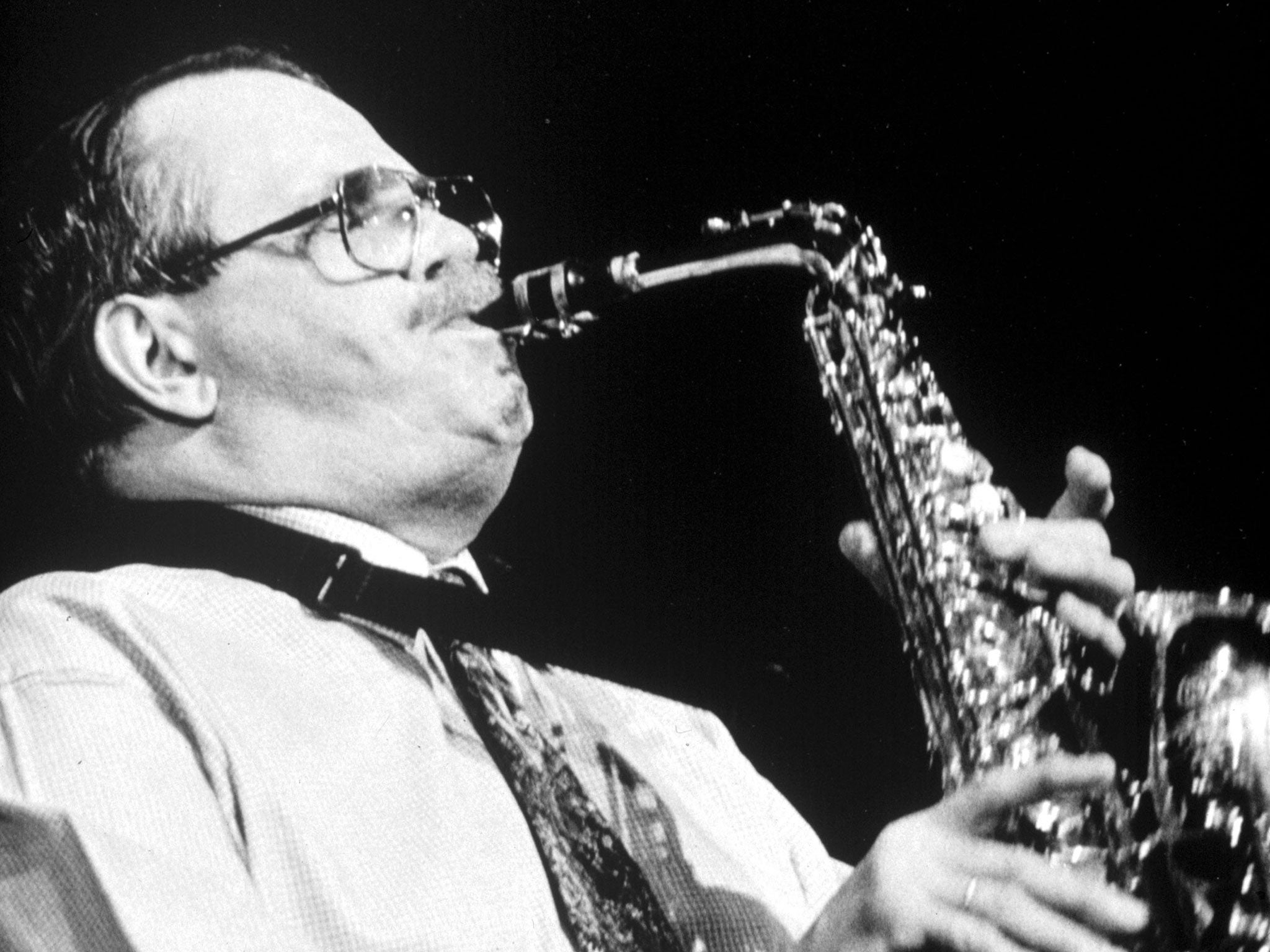Phil Woods: Saxophonist who emerged from Charlie Parker's shadow to become a leading light of 1950s and 60s jazz
Woods contributed vivid playing for bandleaders as varied as Dizzy Gillespie and Benny Goodman

The saxophonist and clarinettist Phil Woods was a leading light in the jazz style that crystallised in the late 1950s, following the early death of one of his idols, Charlie Parker. Like many in the jazz world at the time, he was seldom viewed as a star in his own right, but contributed vivid playing for bandleaders as varied as Dizzy Gillespie and Benny Goodman. In addition, occasional work for quality pop artists meant that he was also heard by the wider public, although the name recognition usually came from jazz listeners.
After inheriting a saxophone from his uncle at the age of 12, Woods began listening to jazz of the Parker variety, and in his late teens would commute from Massachusetts to New York to hear live examples and take lessons with the pianist-theoretician Lennie Tristano. He subsequently studied formally at Manhattan School of Music and the Juilliard School, where he was forced to major on clarinet, as saxophones has been barred from the establishment. But his brief tenure with the band of Charlie Barnet gave little indication of the personalised sounds that were to follow.
As a freelance musician on the mid-1950s New York scene, Woods played anywhere he could, including in strip clubs. But his initial impact, like that of saxophonist Julian “Cannonball” Adderley, coincided with Parker's passing – and the jazz media of the day labelled them as reincarnations. There was a clear stylistic link in each case – but both of them also revered an earlier master, Benny Carter. The critic Martin Williams noted in 1962 that Woods “now reflects a selective knowledge of the jazz of the Thirties as well as of his own generation.”
Woods's personal life, however, did nothing to dispel the typecasting: two years after Parker's death, he married Chan Richardson, who had been Parker's partner. Her autobiography, My Life in E-Flat, reveals that their betrothal, planned for 1 April 1957, was postponed when Woods, driving to the ceremony, was arrested for possession of one ounce of marijuana. The start of their 17-year relationship occasioned some mischievous comments, for instance from fellow saxophonist Art Pepper, who suggested that Woods married Chan in order to obtain Parker's saxophone.
His forays into pop included the sax solo on Billy Joel’s 1977 hit ‘Just the Way You Are’
Woods was already rising in the ranks – and in 1956 had been part of the Dizzy Gillespie big band that toured the Middle East under the aegis of the US state department. Its musical director, the young Quincy Jones, employed Woods for his own first album and later engaged him in the all-star band which in 1959-60 toured Europe for 10 months after being put together for a show called Free and Easy, which opened in Paris but never made it to Broadway. He was part of the band for Thelonious Monk's appearance at the Town Hall, New York, while another all-star group, assembled for the veteran Benny Goodman, involved Woods in a 1962 tour of the Soviet Union.
Until the late 1960s, his day-to-day playing became more focused on anonymous studio work – but, as he told me, “It got to be very unstimulating in the end after all the good writers, like Quincy Jones and Oliver Nelson, moved out to the [West] Coast.”
In 1968 Woods moved with Chan to Europe, where jazz interest was still strong. He worked steadily for five years with his quartet, the European Rhythm Machine, gaining new inspiration and vigour. On his return to the US, however, the foreign adventure counted for little and he felt musically stranded until he formed another small acoustic group, which continued into the new millennium.
Becoming more selective in his studio work, he appeared on an album with the composer-pianist Michel Legrand, with whom he had first recorded in 1958. He was also valued by jazz-inclined pop acts, who added him to individual tracks: he played on Steely Dan's “Doctor Wu”, Paul Simon's “Have a Good Time” and, most famously, contributed the alto sax solo to Billy Joel's 1977 hit “Just the Way You Are”.
Woods probably felt more rewarded by his role, in 1978, as co-founder of an annual festival called the Delaware Water Gap Celebration of the Arts. By now he had settled in that area with his second wife, Jill Goodwin, brother of his then drummer Bill.
Woods was named a Jazz Master by the National Endowment for the Arts, partly for his work in education since the 1960s. While continuing to tour with his group, he had long struggled with emphysema and, as much as 10 years ago, was using an oxygen tank backstage during performances.
Bill Goodwin has noted that Woods recently stopped his treatments and “went out on his own terms”, announcing to an audience on 4 September this year that they had just witnessed his last performance. But those who heard him, even when his powers were dwindling, were never unmoved by the experience.
BRIAN PRIESTLEY
Philip Wells Woods, saxophonist, clarinettist and bandleader: born Springfield, Massachusetts 2 November 1931; married first Chan Richardson Parker (divorced, one son, one daughter deceased); second Jill Goodwin; died Stroudsburg, Pennsylvania 29 September 2015.
Subscribe to Independent Premium to bookmark this article
Want to bookmark your favourite articles and stories to read or reference later? Start your Independent Premium subscription today.

Join our commenting forum
Join thought-provoking conversations, follow other Independent readers and see their replies